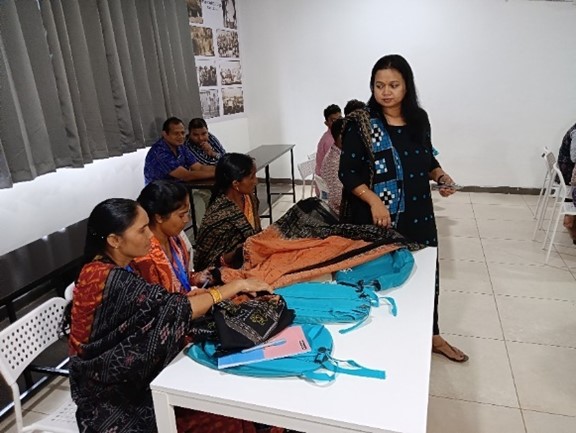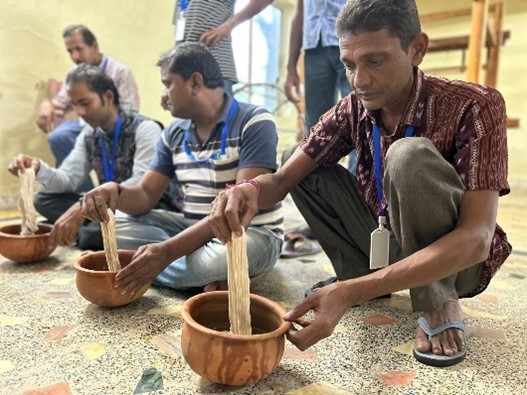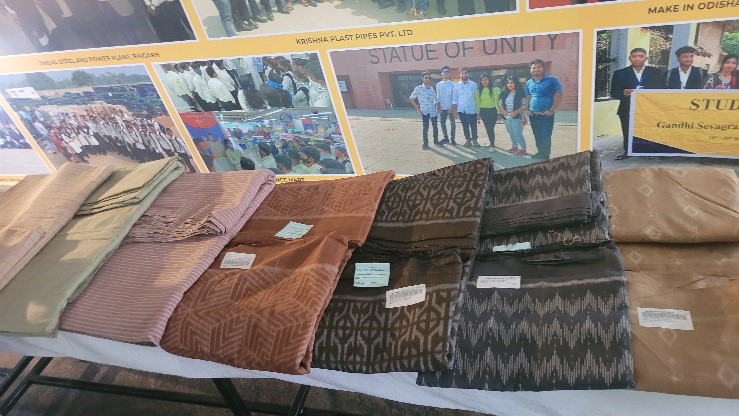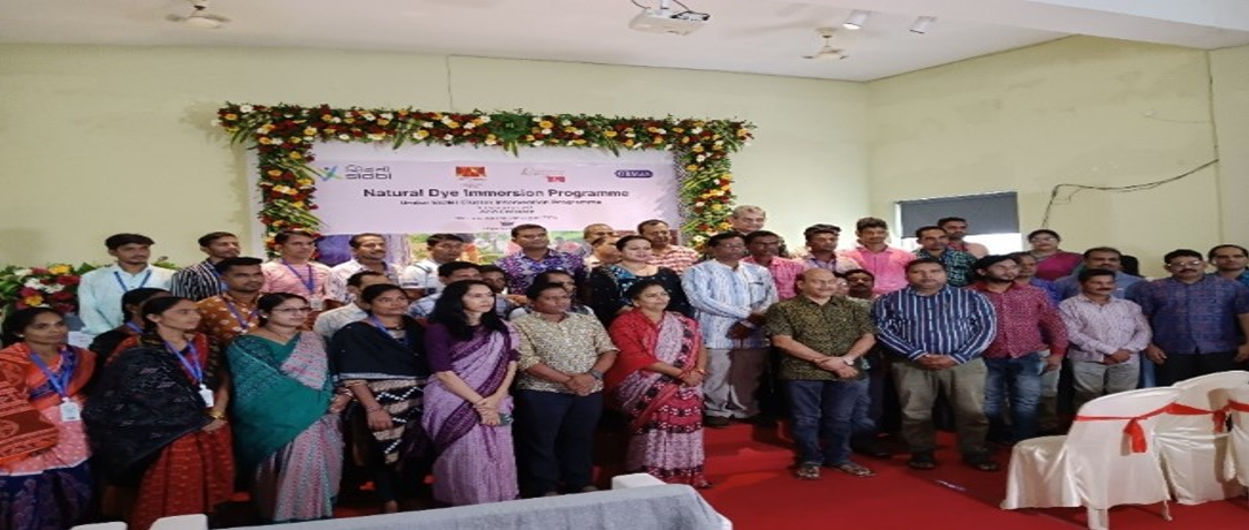Eco-conscious Approach for Developing Ikkat with Birla Excel Using Natural Dye
November 04, 2024Odisha, a state known for its rich cultural heritage, is celebrated for its handloom, textiles, and handicrafts that reflect its unique identity. One of the state’s most cherished weaving traditions is Odisha Ikkat, also known as ‘Bandha of Odisha’. This intricate resist-dyeing technique involves tying and dyeing both warp and weft threads of cotton and silk to create patterns even before the weaving begins. The craft has been passed down through generations, with the districts of Bargarh and Sonepur serving as primary hubs for its production.
The Bargarh district, in particular, stands out for its vibrant handloom industry. Famous for its Sambalpuri Ikkat designs, the region is home to over 13,000 weavers, providing direct and indirect employment to more than 40,000 people. The district is dotted with weaving communities, cooperative societies, and master weavers, spread across clusters in Barpali, Bargarh, Bijepur, Sohela, Bheden, and Attabira. The weavers in this region produce exquisite Ikkat cotton sarees, dress materials, and home furnishings, showcasing a delicate blend of artistry and tradition.

Despite its strong heritage and craftsmanship, the Bargarh cluster faces significant challenges in enhancing the global reach of its products. Understanding these constraints and the potential for transformation, Birla Cellulose—a pioneer in sustainable fiber solutions—decided to step in and play a pivotal role in uplifting this cluster through a series of initiatives.
With the aim of elevating the traditional handloom sector of Bargarh and promoting sustainable textile practices, Birla Cellulose, in association with the Small Industries Development Bank of India (SIDBI), launched a comprehensive Cluster Intervention Program (CIP). Under the guidance of Ms. Priyanka Priyadarshini, Category Head of Liva Saree, Birla Cellulose introduced the use of its eco-friendly Liva Excel fiber in the weaving of Ikkat fabrics, following dyeing with natural dyes. This strategic intervention involved extensive training sessions conducted in collaboration with Imperial College at Bargarh. The primary focus of the program was to educate 30 handloom weavers on the extraction and application of natural dyes, a sustainable alternative to synthetic dyes. By harnessing the potential of natural dyes, Birla Cellulose aimed to infuse modern, eco-conscious practices into the traditional weaving techniques of the cluster. In addition, the program offered guidance on product packaging, costing, and marketing, helping these artisans build a broader market presence.

The training program spearheaded by Birla Cellulose covered a wide range of topics designed to equip the artisans with the skills and knowledge required to integrate natural dyes and Liva Excel fiber into their existing weaving practices. The program content included the introduction and practical application of Birla Excel for Ikkat weaving, extraction of natural dyes from raw materials, dye application and color fixation techniques, understanding market trends and consumer preferences, product design and cost calculation, sustainable packaging techniques, and marketing strategies, including social media promotion.
Natural dyes, which are derived from plant-based pigments, have gained attention for their eco-friendly properties. Through the workshops organized by Birla Cellulose, the artisans were able to master various dyeing methods, understand the process of color extraction, and apply these techniques to yarn. This not only enhanced their existing skills but also aligned them with global sustainability standards.
Birla Cellulose’s contribution extended beyond training. The organization facilitated product diversification and helped create market linkages for the weavers. With the guidance provided, the weavers incorporated Liva Excel yarn and natural dyes into their traditional Ikkat weaving, enabling them to produce fabrics that are more environmentally friendly and appealing to modern consumers. The initiative also focused on enhancing product packaging and positioning, making the products suitable for both domestic and international markets. The program has already started yielding tangible results. The Bargarh cluster has successfully developed naturally dyed Ikkat fabric using Birla Excel, with the first batch now ready for export to Japan. This milestone has significantly boosted the confidence of the weavers, who are now working on further upskilling themselves and exploring new opportunities.

Birla Cellulose’s eco-conscious intervention in the Bargarh cluster is expected to create a niche market for natural-dyed Sambalpuri fabrics. The initiative not only helps preserve the rich tradition of Ikkat weaving but also has a positive socio-economic impact on the region. With a projected 20-25% increase in the income levels of the participating weavers, the program promises a brighter future for the artisans of Odisha. By supporting this initiative, Birla Cellulose has reinforced its commitment to sustainability and empowered the artisans of Bargarh to embrace modern innovations while staying true to their roots. This collaboration between Birla Cellulose and the traditional weavers of Bargarh is a perfect example of how industry leaders can play a transformative role in preserving heritage crafts while promoting eco-friendly practices for a sustainable future.











